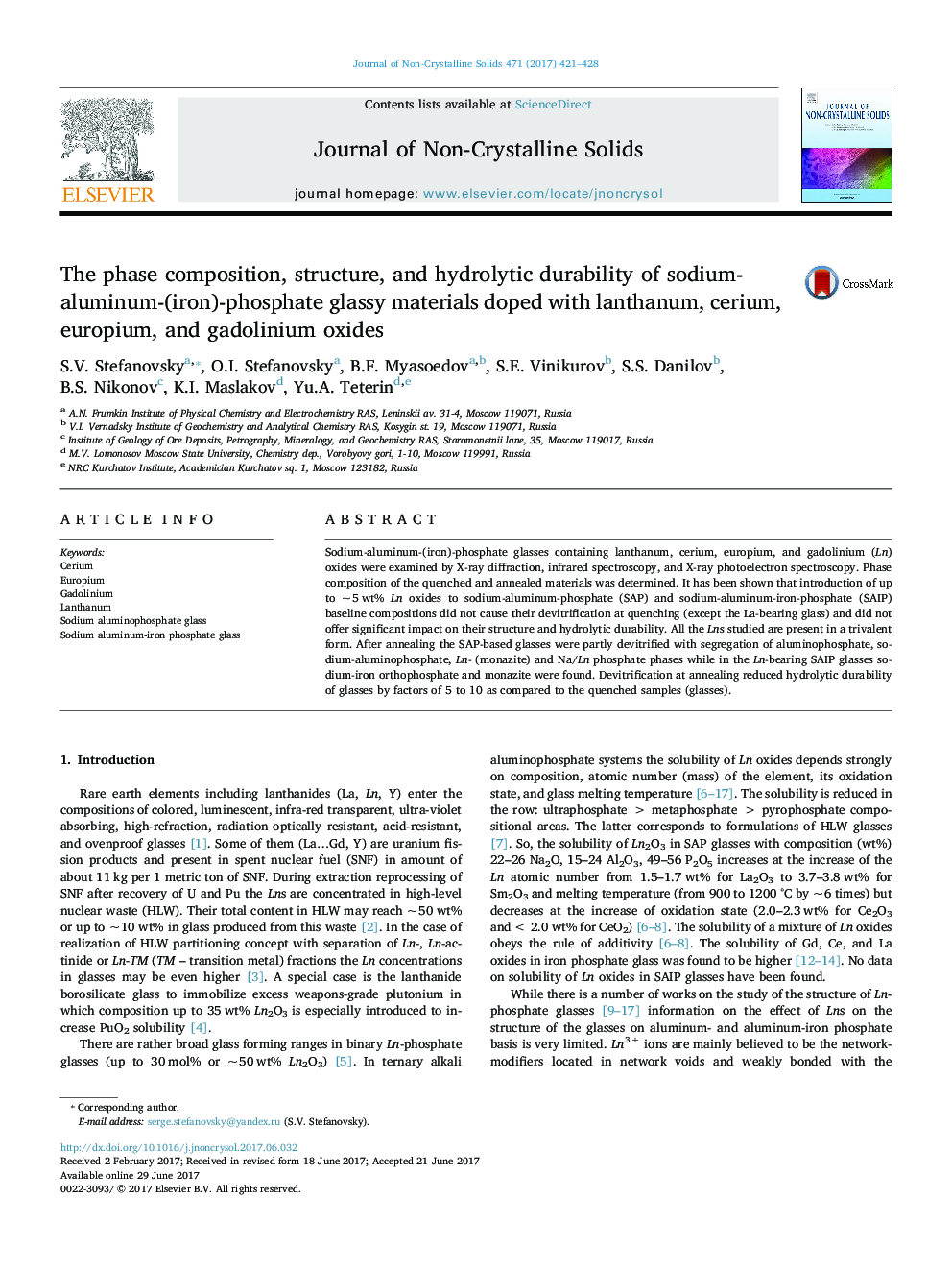| Article ID | Journal | Published Year | Pages | File Type |
|---|---|---|---|---|
| 5441111 | Journal of Non-Crystalline Solids | 2017 | 8 Pages |
Abstract
Sodium-aluminum-(iron)-phosphate glasses containing lanthanum, cerium, europium, and gadolinium (Ln) oxides were examined by X-ray diffraction, infrared spectroscopy, and X-ray photoelectron spectroscopy. Phase composition of the quenched and annealed materials was determined. It has been shown that introduction of up to ~Â 5Â wt% Ln oxides to sodium-aluminum-phosphate (SAP) and sodium-aluminum-iron-phosphate (SAIP) baseline compositions did not cause their devitrification at quenching (except the La-bearing glass) and did not offer significant impact on their structure and hydrolytic durability. All the Lns studied are present in a trivalent form. After annealing the SAP-based glasses were partly devitrified with segregation of aluminophosphate, sodium-aluminophosphate, Ln- (monazite) and Na/Ln phosphate phases while in the Ln-bearing SAIP glasses sodium-iron orthophosphate and monazite were found. Devitrification at annealing reduced hydrolytic durability of glasses by factors of 5 to 10 as compared to the quenched samples (glasses).
Keywords
Related Topics
Physical Sciences and Engineering
Materials Science
Ceramics and Composites
Authors
S.V. Stefanovsky, O.I. Stefanovsky, B.F. Myasoedov, S.E. Vinikurov, S.S. Danilov, B.S. Nikonov, K.I. Maslakov, Yu.A. Teterin,
